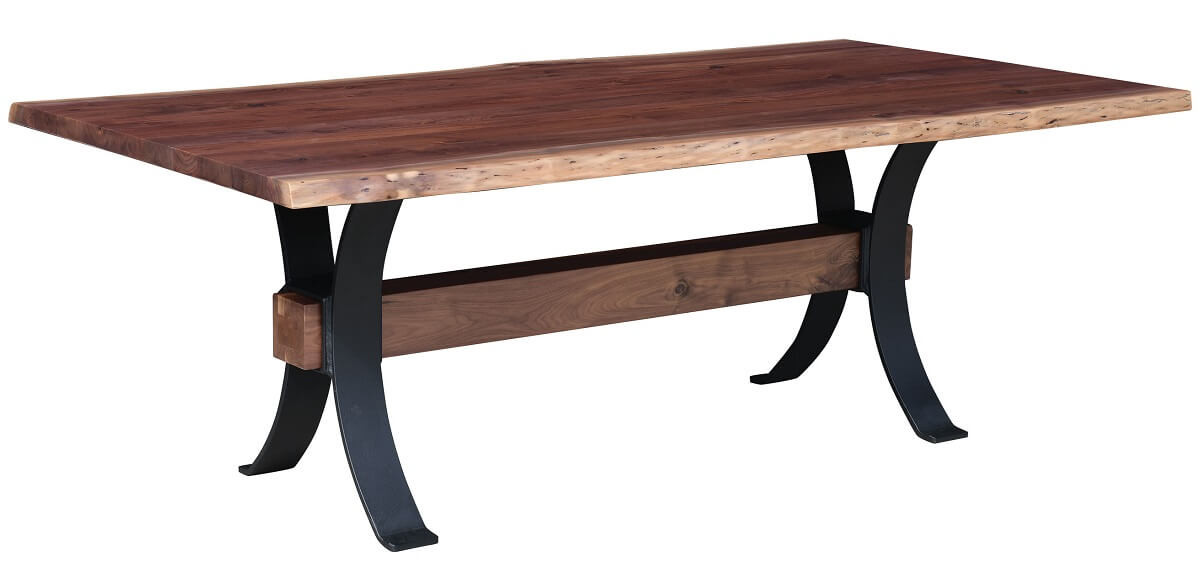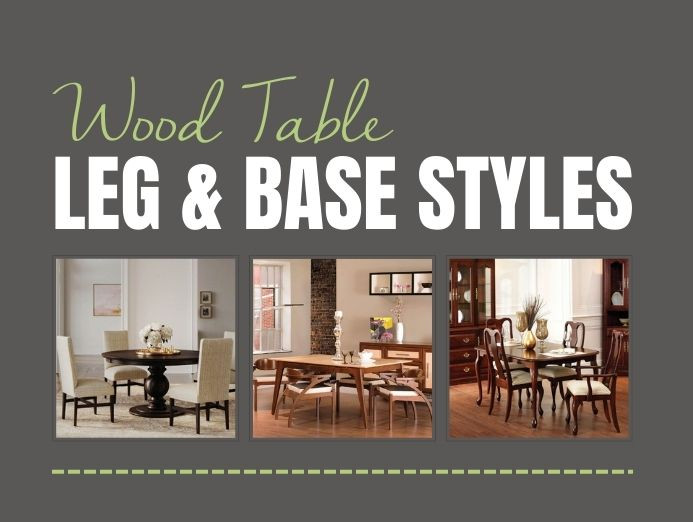From Typical to Modern: Discover the Ideal Dining-room Table Legs for Your Style
While traditional layouts such as cabriole and transformed legs stimulate a sense of ageless elegance, modern styles like hairpin and geometric options offer a chance for striking aesthetic rate of interest. As you think about these components, the inquiry continues to be: exactly how can you flawlessly incorporate these varied leg styles to develop an unified eating experience?
Understanding Table Leg Styles
The variety of dining-room table leg styles can significantly affect both the appearances and capability of the room. Each leg design adds special sensible functions and visual aspects, satisfying diverse style choices and usage requirements. Understanding these styles is critical for picking the best table that lines up with your total indoor design vision.
For example, tapered legs supply a clean, timeless look that can improve a space's elegance, while stand bases supply stability and take full advantage of legroom, making them optimal for smaller sized rooms. Barrette legs, a hallmark of mid-century modern-day design, present a commercial panache, permitting an airy, open feel. Likewise, trestle legs stimulate rustic charm, offering robust support and a feeling of timelessness.
Wood legs can bring warmth and texture, whereas steel alternatives frequently communicate a smooth, contemporary vibe. Eventually, comprehending table leg styles is essential for producing a cohesive eating area that reflects individual design while making certain functionality and comfort.
Traditional Table Leg Options
When picking dining-room table legs, standard options usually embody ageless sophistication and workmanship. These styles reflect an abundant heritage and a dedication to quality, making them ideal for those that value classic looks.
One of one of the most renowned conventional leg designs is the cabriole leg, identified by its stylish rounded shape. This layout frequently features decorative makings and is most frequently found in Queen Anne and Chippendale furniture. An additional preferred alternative is the transformed leg, which flaunts a collection of smooth, rounded shapes that offer a timeless look while keeping security.
In addition, the straight leg, while simple, uses a tough and basic framework that can blend seamlessly with a selection of tabletop designs. For those drawn to ornate outlining, claw-and-ball feet legs evoke a feeling of magnificence and can offer as a sensational focal point in any kind of eating area.
Finally, pedestal bases, although not strictly legs, offer an alternate conventional option that permits for ample legroom and can be wonderfully sculpted. Each of these typical leg styles adds to the general ambiance of a dining-room, weding feature with visual charm.

Modern Table Leg Designs
Modern table leg styles provide a diverse series of go to these guys styles that highlight innovative products and tidy lines. These styles typically prioritize performance while functioning as striking focal points within a dining space. Minimalist visual appeals prevail, with legs crafted from products such as steel, glass, and crafted wood, which add to a modern and ventilated feel.
One popular style is the barrette leg, defined by its slim, conical structure that supplies stability without frustrating the tabletop (dining room table legs). This style is typically found in mid-century modern-day furniture and can effortlessly match different eating table shapes. One more pattern is making use of geometric forms, where legs may take on angular or unbalanced forms, including aesthetic passion and a touch of artistry

Blending Designs for Unique Spaces
Usually, house owners seek to create unique eating areas that mirror their individual design by mixing different layout components. This technique permits for the unification of varied appearances, causing an unified yet distinct environment. For instance, coupling a rustic wood table with sleek, contemporary metal legs can create a captivating contrast that elevates the area's general charm.
Furthermore, integrating vintage table legs with modern tabletops can evoke a feeling of background while preserving a modern perceptiveness. Such mixes not just showcase private taste yet also encourage creativity, permitting property owners to curate a space that really feels both individual and welcoming.
Color plays content a vital duty in this blending procedure; selecting table legs that enhance or comparison with the existing color design can enhance visual rate of interest. Whitewashed legs can soften the daring of a dark table surface area, creating a well balanced aesthetic.
Tips for Picking the Right Legs
Selecting the right table legs is important for attaining both capability and visual allure in your eating room. Begin by taking into consideration the overall style of your area. Conventional settings benefit from legs that include detailed carvings or transformed designs, while modern spaces might require sleek, minimal styles.
Following, evaluate the height and security of the legs. dining room table legs. Basic eating tables vary between 28 to 30 inches in height, so ensure the legs enhance this measurement for comfort. Additionally, robust materials, such as wood or steel, can boost security and long life
Assess the leg shape also-- alternatives consist of straight, tapered, or stand styles. Straight legs provide a classic appearance, while tapered legs can add a touch of sophistication. Pedestal bases provide ample legroom and are excellent for smaller areas.
Conclusion
In recap, selecting the optimal eating room table legs calls for cautious consideration of both traditional and modern-day styles. By integrating leg style, elevation, and material with the general decor, a cohesive and welcoming atmosphere can be attained.
The variety of eating room table leg styles can considerably influence both the aesthetic appeals and functionality of the space. Eventually, recognizing table leg styles is important for creating a cohesive eating area that shows personal design while making sure functionality and comfort.One of the most famous conventional leg designs is the cabriole leg, characterized by its graceful curved form. Straight legs supply a timeless appearance, while tapered legs can add a touch of style.In recap, selecting the optimal eating space table legs needs cautious consideration of both conventional and modern designs.